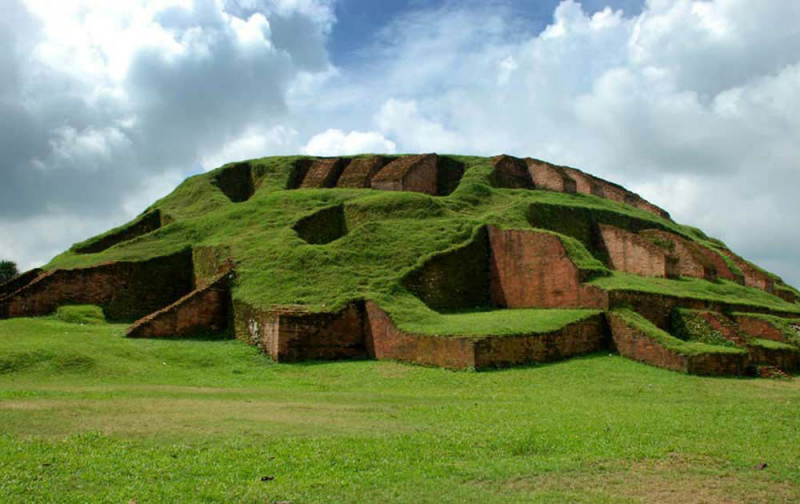Mahasthangarh Wall
The Mahasthangarh Wall gives witness to the glorious history of Pundranagar, the capital of Paundravardhanapura, which has a roughly two-thousand-year-old history. The remains lie 13 kilometers north of Bogura district town, on the west bank of the Karatoya River.
This fortified city, Bengal's first and oldest, is surrounded by a periodic earthen and brick enclosure wall that is 1525 meters long in the north-south direction, 1370 meters broad in the east-west direction, and 5 meters high above the surrounding plains.
In 1928-1929, the first archeological excavations at Mahasthangarh began. During this time, excavations were carried out at three locations: Vita Munir Ghon in Boiragi, Govinda Vita outside the city, and Vita Munir Ghon in Boiragi. Various elements of the fort were periodically excavated in 1960-1961 and then in 1988 after a considerable period of time.
Long-term excavations have revealed nearly continuous settlements within the fort city from the 4th century AD through the Muslim era. Unfinished houses, roads, sewers, culverts, temples, mosques, arches, towers, and other structures from the Pre-Maurya, Gupta, Pala, and Muslim eras have been revealed at 18 levels.
These architectural structures have also been unearthed. Mauryan-era tapering rock fragments, stamped silver coins, molded currency, black, and batch chairs, bulleted warp and embroidery, northern black smooth pottery, and pottery The ceramics, as well as a stone slab with Arabic inscriptions, are particularly noteworthy.
Location: Pundravardhana, Shibganj, Bogra, Bangladesh











